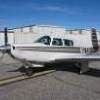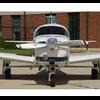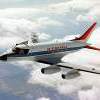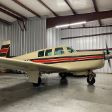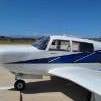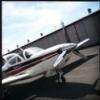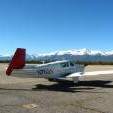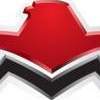Leaderboard
Popular Content
Showing content with the highest reputation on 08/16/2024 in all areas
-
(Re)introductory post here. I used to be an active pilot and active on the original Mooney email board, so some may remember me - as I've recognized more than a few old friends just in 20 minutes of glancing through this forum. Anyway, was based in Chandler AZ, 1970 M20C N9459V, moved to DC area, had her repainted as N7788V. My flying was tapering off, but the final blows were covid hit, I went through a divorce right in the middle of the lockdowns, plane fell out of annual and I refused to use the mechanic on my home field (good work, way too expensive), then ADS-B mandatory, and 88V sat in a hangar all lonesome. Was getting a bit 'out of sight, out of mind' when I got notice that my decrepit DC3 airport was closing forever and I had 30 days to move the plane. Pandemonium at Hyde Field. Started to get ferry permit in motion when I failed my medical! Crap. Now I needed a Mooney-rated ferry pilot, with DC3 FRZ privileges, and good weather all at once. Umm, let's just say the plane got moved, got a fresh annual, and got ADS-B compliant. I started working on the FAA med waiver, but the entire medical system was still jacked up coming out of covid. Keeping this too long story a little shorter, I got all the tests and reports, sent in everything to the FAA, rejected, more tests requested, another medical, a bigger package to the FAA, and then.... nothing. Calls every week, "In process", then calls every two weeks, then three, then six, then.... Here's the Murphy's Law part... I was planning some major panel upgrades to go with returning to aviation, but the medical waiver just wasn't coming through. So I got a hankering for a new motorcycle and started looking. I didn't need a new MC, but the local dealer made me a terrific offer on just the bike I wanted. So I figured that IF I bought the motorcycle, Murphy's Law would kick in and I'd get the medical waiver. I started calling Oklahoma again, "In process". Then I got someone who actually read my application and asked specific questions. Then calls the next week said "They have your application", and back the old pattern. Sighhh. At least I had a new motorcycle to ride. Last week I got an official letter in my mailbox. "We are pleased to inform you"...!!!!!! It's a 5 year waiver, but I'm almost due for another medical. LOL 88V is scheduled for annual early next month. I'm taking vacation to do my first owner-assist in 20+ years. Devouring aviation stuff on the internet. Holy crap the online education on YouTube is good. (really recommend The Finer Points). Glad that most of it is familiar, but watching the vids is upping my confidence. Bought an iPad mini 6, learning ForeFlight. Think I'll run down to the airport and reinstall her battery this weekend. Might do a high speed taxi if things aren't busy. That's for now. Lots of things have changed in aviation (if not old Mooneys), so I expect to be coming here with stupid questions. Thanks for reading. - Clear skies and tailwinds. AJ. 88V, KCJR7 points
-
As many of you probably already know, Advanced Aircraft Services out of Troutdale, OR is a MSC. They used to do full reseals in the past, but no longer do them. I had heard they still do patches for leaks and had a reputation of being able to give a no sh!t assessment of whether or not a leak can be reliably patched without a reseal, and could do the job. Earlier this year, I called Greg and set up an appointment to fly my M20C up there for him to check out. The left tank was seeping fuel on the spar and my A&P/IA had been bugging me about it for a while asking me to please get it fixed. Greg and I set up an appointment for Monday of this week, so I flew up on Sunday so it would be ready Monday morning. I met with him as scheduled and he got to work on it, diagnosing and patching the leak. He let the fuel sit in the tank until Tuesday around lunch time to make sure the leak was indeed patched and by 1400 hours that afternoon, I was on my way home. It was extremely refreshing to deal with a shop that keeps its appointments and lives up to its reputation of solid work. That and Greg just seems like a very kind, hard working guy that takes pride in his work. Tim3 points
-
Some numbers I see on the internet I’ve come to think that IAS must mean Internet Airspeed, because my J can’t get there.3 points
-
I don't think LOP is better, it's different. It has some advantages, such as better MPG. It has some disadvantages, such as power settings you can't run. In my 182, I very rarely run any power settings that I could achieve LOP. At WOT at any given altitude you will have a lower power setting LOP than ROP because at WOT your power is limited by the amount of air you can get into the cylinder and if you change to limiting that by fuel, of course you are going to be lower power. If you are flying WOT ROP and switch to LOP, you will fly slower. For every LOP setting, there is a safe ROP setting that will cause you to fly faster. There are ROP settings for which there is no safe or achievable LOP setting. LOP has more restrictive limits than ROP. Some are temperature limits, some are not. At 8,500' in a NA engine, you can probably skip LOP and ROP, and just fly whatever mixture you want. If you want to fly at a power setting (including considering altitude) that is only available ROP, the nearest LOP is going to be lower power. And as such, you'll be flying slower. If you are already flying a power setting that is available in both ROP and LOP, you won't go faster or slower if you switch to the LOP version. I disagree that it's a safe statement to say that LOP makes less power than ROP. It is a safe statement to make that there are many power settings that are not available LOP but are available ROP, and that these are all going to be power settings higher than the closest available LOP power setting.2 points
-
By all means, don’t run that risk again.2 points
-
As I understand it, only the FAA determines airworthiness and if there is no AD you are under no obligation to adhere to a recall. The recall is primarily to provide legal cover for the manufacturer in the event of an accident and subsequent lawsuit. But I’m not an attorney or an expert on airworthiness.2 points
-
2 points
-
LOP only hurts speed compared to a higher power setting. At the same amount of produced power, you will get the same speed. If you consider MP the measure of power you'll get lower speeds running LOP because you need a higher MP (and/or RPM) in order to achieve the same power output when running LOP. Some people cruise ROP at power settings that they cannot achieve LOP at, so you'd have to choose a lower power setting to fly LOP, and in that case you'd fly slower. If you consider fuel burn to be your power setting, you will fly faster LOP than ROP, since LOP has a higher BSFC. Of course you can pick LOP and ROP settings where this isn't true, like extreme LOP is actually less efficient than barely ROP, but in general, LOP is going to be more efficient, and therefore you'll be faster LOP than if you are burning the same amount of fuel ROP.2 points
-
There are good mechanics, and there are not so good mechanics. I realized at some point halfway into ownership that it’s foolish to think that only the “not so good ones” make mistakes. Everyone makes mistakes, the difference between good and not so good are the processes used to reveal mistakes before the aircraft is returned to service. Several years ago, I noted an EGT increase on number one during climb out. This was a few hours after I had performed a plug rotation. Mag check revealed a miss. I was deeply disturbed to find that I had failed to tighten the lower plug lead on #1 which had completely detached. Not only did I not tighten it, but missed my mistake on final inspection before reassembly. I changed my process because of it. My leads are 90° elbows. I used to orient/angle all of the elbows by hand before tightening. I don’t do that anymore.2 points
-
I flew 6 and up year olds in my back seat and it was fine when they were small. Its very cramped as they became 20 somethings year olds and over 6 feet but I have flow with the same used to be a 6 year old now 6'4'' who wanted to sit in the back holding hands with his girl friend. Too small for that for a nice flight but it was superb when they were small. When I got this plane I thought I would end up moving up to a larger plane when they got big but I never ended up doing that. Now all 3 boys are all grown up - I drop my youngest off at college in Providence, RI in 2 weeks.... This plane serves me just great now on the other side and Im keeping her.2 points
-
Informed members will have probably figured this out, but my lack of knowledge went beyond semantics. The J-model ignition issue I posted about above is associated with a Slick magnetos and ignition system (on an IO-390). I actually thought the Slick system was a type of shower-of-sparks system, but I am learning that it is a replacement for the shower of sparks system. So thank you to those who have tried to help me out (I'm still in trouble-shooting mode via the shop) and apologies to those who I confused. I'm learning a lot, regardless.2 points
-
Endorsements are for the young!2 points
-
2 points
-
I had a multiple leaks in the outboard bay of my left fuel tank and Greg and his team patched it successfully this spring. I could pick up my plane within a week and IRC, bill was less then $1500, probably with some fuel. Highly recommended.2 points
-
+1 for Greg and Advanced. They have earned my trust since moving to the PNW region.2 points
-
@gwav8or Are you sure you have SOS (shower of sparks; makes buzzing sound) or Slick-Start (electronic; no sound)?1 point
-
I've been able to quote liability only through Global for my entire agent career but I suspect they might be allowing a greater age range than previously indicated. I'll check with an underwriter there. Global has been a consistent underwriting company as long as the pilots are "in" before a certain age. Global is my most common carrier when an aircraft owner wants liability only.1 point
-
He should have done that BEFORE the medical1 point
-
Push the nose down, I promise you will see 196 kts. 1989 I think it was I was getting my fixed wing Commercial / Instrument. I was just getting into their M20AT’s. The procedure in the other aircraft when in cruise was to leave throttle in, but to trim for a 500 FPM rate of descent at twice the number of minutes per thousand feet you had to lose, meaning if you had to lose 5,000 ft, start descent a little more than 10 min from destination. We always flew ROP as it was 1989 and that’s what the school wanted. Anyway first time I was by myself and did this in the Mooney I noticed after a few minutes that I was creeping past VNE, which hadn’t been an issue in the Pipers or 152’s etc.1 point
-
1 point
-
Your mixing analogies, picking cases to support you assertion that LOP is “better” Let’s use the case the OP posted about to start this thread. ”I’ll be flying WOT at 8500 LOP” He will be flying slower than if he was ROP, yes he will be getting better MPG, I stated that, but at a slower speed, IF speed was more important than MPG, then you go ROP, burn the fuel and go faster. He was asking about what A/S he will get so speed is at least an interest. Most of us cruise at higher altitudes when flying significant distances, most of us do so WOT, because even WOT we are most likely below 75% power, so if speed is most important, then ROP is the way to go, if efficiency is sought, then LOP, AND slow down will get you there with the least fuel burned. So most of us cannot fly at the same power setting LOP that we can ROP Sometimes depending on length of the leg being flown, slowing down and LOP can get you there faster, because if ROP you would have to stop for fuel, while LOP and slower you won’t. It’s not common but worth flight planning to see. There is no one “best” mixture to fly, I have nothing against LOP, probably 90% or better of my flying is LOP, because I’m Retired and not usually in a hurry, but if I am I know to screw the mixture knob in until I’m 100F ROP, the increase in speed is significant, but of course so is the fuel burn. It’s a pretty safe statement to make that LOP makes less power than ROP.1 point
-
There is more to the gross weight of an airplane than flying, Landing has a lot to do with it. You have to be able to slam a fully loaded plane into the ground without breaking anything.1 point
-
they certified the plane for a higher gross weight, increased it by 230 lb, boosted the HP by 10 HP to 220, doubled the control balance weights to improve flutter resistance, changed the brakes to double pucks so that they last longer which required a change to the landing gear spindles without any change in weight (as i weighed them) - really not any beefier. My useful load is over 1120 lbs Then engines are a complete turbo with automatic hydraulic watergate and aftercooler unlike the manual watergate 231 (merlyn or fixed bolt are both manual) including tuned induction system and 28V system - very different from 231 and more $$. Frankly the most efficient Mooney when cruising at altitude with much improved useful load. (Down low, the J earns that title ) Sent from my iPhone using Tapatalk1 point
-
When I had an M20F, it went about 145 KTS in cruise. After I had it for quite a while, I added a cowl closure and adjusted the rigging and It would do 152 KTS. I never ran it LOP.1 point
-
What little I've read about it seems to point to an improved steel tube structure with larger diameter tubes (or maybe more structure?) near the wing attach points and beefier main gear units. I have no idea if this is true. It's just what I've gleaned from a couple articles.1 point
-
PIREP on my original issue. Needed fuel today so I started up, leaned it out. Taxi to the fuel farm. Got fuel then went to the FBO for a bathroom break and a bottle of water. Back to the plane. Didn't touch anything. Hit the starter and after about 15 blades it started up. Thank you all for the advice!! I just hope the next fuel stop works out the same! lol Also, I think that my ignition switch is not connected correctly. From what I've read, the shower of sparks should be activated when the key is turned to start, without pushing in. However, when I turned the key to start without pushing in the starter engaged. So, I've got one more thing to add to the list for the mechanic to check out at next annual (September).1 point
-
I just got my quote. Liability was $350 and hull was $1800. It's all about the landing gear.... Put er down!1 point
-
thanks for info on Weep No More but i am not quite ready to do it - but soon. Luckily i don’t have to look at it that way, nor justify any trip, i have my plane for traveling and budget annually for that so would just substitute this trip for another and ideally make it a bit of holiday in the process; at least the return. But understand as it eats up real $. Good luck on yours. We lost a great option for west coast re-seals when Greg opted to discontinue this service. His shop has a great reputation as well. Sent from my iPhone using Tapatalk1 point
-
1 point
-
1 point
-
I resemble that remark.1 point
-
Easy to forgive your confusion. Champion makes an after market ignition booster called “Slick Start”… SlickStart™ unleashes a firestorm of ignition energy to get your engine started1 point
-
Greg resealed my tanks in 2021. He’s a solid guy and runs a great shop with great work ethic. I would definitely recommend his services.1 point
-
Absolutely kudos to Greg. Excellent, fair, quality and honest service. What a pleasure.1 point
-
1 point
-
I fly a 231, and it is a great traveling plane, but I believe other models fit your mission more appropriately. If 80% of your flying is going to be local, I don’t think you would need a turbo for that. Myrtle has a 950ish useful load. She does 150kts TAS at 10,000’ on 10gph and 170kts TAS at 17,000’ on 10gph. She has a lot of range with 72gallons useable. In order to take advantage of the turbo you need to use oxygen, so make sure you are comfortable with the cannulas.1 point
-
We stopped at Springbank to visit Banff on the way to Alaska. They arranged a rental car for me… was a very easy experience. I think it was like $40CAD a night and they took some off for buying fuel, which wasn’t terribly overpriced. These prices are pretty typical in my experience for Canadian FBOs at busy airports, if maybe on the lower end. It’s only about an hour drive to Banff from there, but it’s closer than from Calgary anyway.1 point
-
I had a similar thing happen after a major overhaul - but it was the lead wires that were only finger tight. Pulled the cowl and found the leads almost hanging off the plugs. That was after doing the first break-in flight. Ugh.1 point
-
Since Mooneys don't have oleo struts that can collapse or be overcharged, just sitting on level ground is relevant.1 point
-
If you're in the South, David at Dugosh is also a whiz at patching tanks. I think he kind of enjoys it.1 point
-
I'll third this, i was almost immediately comfortable with the 355 coming from the 480 and Garmin Pilot.1 point
-
Analog cars will always be more engaging. Performance has reached crazy levels but the cars are becoming less and less engaging. even the exhaust notes sound like they were designed in a studio. I’m not an old man, but when it comes to sports cars, I feel like a curmudgeon. Ferrari builds beautiful cars, but their decision to drop manual gearboxes over a decade ago is puzzling. Perhaps a larger percentage of Ferraris see the track than I think.1 point
-
Yeah I've heard that a few times from you and @Skates97. I've got the material but just didn't like the bubbles I saw in it. If you use soap to remove the bubbles, but then put it back on, there's more bubbles. Out the door with the OSH discount and DIY kit, $700, to get all 4 covered plus the front, isn't too shabby.1 point
-
Ouch! Manual gear for the win. Hope those with the Dukes actuator get it resolved quickly!1 point
-
Not surprised you accomplished it quickly. But I don't think this sort of thing is really about how fast you can work. Rather, it's about the confidence to get the job done methodically, even if you're interrupted during the process to correct a small attitude deviation, backspace after a bump of turbulence causes you to hit the wrong key, etc. It's just not a crisis if it takes a full minute to load a new approach, or re-load the current approach with a different transition. A skill that's important in establishing that confidence, is having enough situational awareness to understand whether you're actually short on time and space. Assigning a new approach or transition when you're 30 seconds away from a no-longer-relevant fix is kind of a jerk move by the controller; but doing so when you're several minutes away is not. So what if it takes you a couple of minutes to bring up the new plate and re-load the approach? You've got that time. But you only know that if you have enough SA. It's hard to argue that SA is a Herculean task in the modern era of moving maps and geo-referenced approach plates, but you still have to be ahead of the airplane. On a related note, one of the things I teach my IFR students is the importance of this tool in the tool bag: XXX Approach, can I get a vector while I re-program my GPS? This is unlikely to piss off the controller, but even if it does, you're the PIC. And that vector request might help a new controller understand what's a reasonable expectation, though that's rare. Experienced controllers already know when they're giving you a late/high workload assignment, and will be unsurprised by the vector request. That's not to say you shouldn't bring your "A" game in a busy metropolitan area. But in the end, the person with their fingers on the GPS, and the folks in front of the scope, are all on the same team.1 point
-
These were 12v clocks made by VDO in Germany. There’s a voltage step down clock circuit in 28v Mooneys that have this clock. VDO made the clock to go into Porsche 944s starting in 1986. Mid-Continent bought the clocks from VDO. The first Mooney to have this clock? (Drumroll please. . . .) The 1988 Mooney Porsche M20L where it was found on the Pilot yoke. Later it showed up on the TLS panel and then made it to other Mooneys.1 point
-
Absolutely. The fuel situation was confusing. If he really had 90 minutes of fuel, my advice would have been to climb above the clouds and take five minutes to get his head straight and come up with a plan. Bouncing around in IMC when you’re seriously task saturated has a tendency to get worse and worse as fatigue sets in. If he had five minutes of straight and level flight, he could retrieve an iPad charger from a bag, or figure out an ILS to fly, or something. A VOR circling approach in the soup isn’t a great recipe for success with a non-proficient pilot. Finding VMC somewhere and flying to it - or at least finding high ceilings somewhere that would allow a visual approach after an IMC descent - is what I’d want for him.1 point
-
Hmm, I've always thought the "7" on my plane looked kinda of cool. Guess I'm just not up on airplane fashion trends1 point
-
Lot of FUD in this thread. Simply put The Executive represents the pinnacle of Mooney. It’s in the name. Would you rather pull up to the ramp in an Executive or a “Ranger”. Executives represent those of us who read Town & Country for the articles and know a good cigar when we see it. Champagne kisses and caviar dreams.1 point
-
Jorgen- typically I'm flying in the 8-11k range at altitudes at 2550 rpm and around 13-14 gph. and vary between ROP and 10-20 lean of peak on the leanest cyl. depending on winds and temps. I've found that the factory 3 probe egt will show 40-50 lop when my GEM 610 shows less. The descriptive of the chart for the M20R that we are to use is attached. It shows 190 knots at 2500 rpm. Thus it would stand to reason that 2550 would give more speed even though this chart is ROP and 7500'. In addition since I fly alone 90% of the time I am well below the 3368 lbs which also increases speed. As you know the temp will also effect the TAS and I fly more in the cooler times of the year so that also helps. However I might suggest you check your rigging. It can make a huge differance. There should not be that much differance in our performances when compared to book. Currently I have 425 hrs TT on th A/C and had the rigging checked at time of purchase by an MSC. it was pretty much dead on although one gear door was tweaked. In the past I have picked up 6 knots or more with Mooney's that were out of rig. Just something to consider. MOONEY M20R - OVATION 2 GX SECTION V PERFORMANCE 5 - - 26 AIRPLANE FLIGHT MANUAL ORIGINAL ISSUE - - 12-11-2007 M20R OVATION 2 GX - SPEED POWER VS ALTITUDE EXAMPLE: PRESS ALT 7,500 FT OAT 10 C POWER 75% AIRSPEED 190 KTAS SPEED, POWER VS. ALTITUDE GEAR UP , FLAPS UP , 3368 LBS1 point




